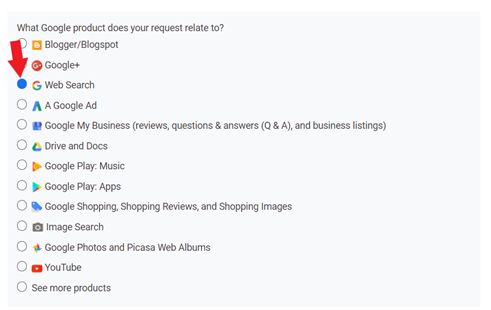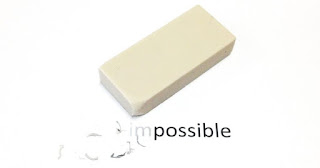A Note on Social Media
In an age where we live update just about everything, it’s worth noting that social media posts will often be indexed by Google.
Google’s Removal Policies
Google has come under scrutiny recently for having a “liberal bias.” In reality, their goal is to provide unbiased, algorithmically driven search results.
In an effort to protect that neutrality, Google is reluctant to remove information. Exceptions include “sensitive personal information” and certain legal issues.
Legal Removal Requests
Legally, if any web content includes anything to do with child sex abuse or inappropriate images of said children, it will be removed.
Additionally, they also remove any content that infringes copyright, as long as they meet the requirements of the DMCA (Digital Millennium Copyright Act).
If you’ve ever owned a website, you may be familiar with submitting DMCA requests. Any legal removal requests need to be submitted to Google via this page.
Personal Information Removal
Certain personal information will be removed by Google, including credit card information, bank account numbers, images of signatures, explicit images that were shared without your permission and confidential medical records.
They will also remove any national identification numbers such as social security numbers, passport numbers, and tax identifiers.
They will not, however, remove things such as telephone numbers, addresses and your date of birth. This is usually a matter of public record.
Moreover, if the information about you was found through a government website, it is most likely not going to be removed, as this is once again classed as public information.
Personal removal requests are reviewed and assessed by Google on a case by case basis. To submit a request for removal, go to this page.
What follows are directions on how to complete each request.
How to Submit a Legal Removal Request
1. Go to this page to initiate your request
Google requires you to submit a removal request for each Google platform which you would like content removed from.
2. Select the platform by clicking the corresponding radio button as seen in the screenshot below:

You will then be asked specifically what the content is related to. Select the option which best matches the type of content you’d like to be removed.

Google will provide you with a link to the page where you can submit all the necessary information.
How to Remove an Image from Google
Google usually doesn’t remove images from their search results. This is because Google doesn’t physically have the images, they are just indexed through other websites.
They state that even if they remove it from their search results, the image will still exist on the third-party site and other search engines are able to pick it up.
Google suggests that you contact the owner of a website directly if you wish to have an image removed.
If the image contains sensitive personal information such as credit card details or national identification documents such as a passport, then Google will endeavor to get it removed.
Refer back to their removal policies to see if the image you wish to remove is covered. Then, to begin the process, click here and fill out the questionnaire and click on Submit once you’re finished.
Google will also endeavor to remove any unwanted explicit images of yourself that you did not consent to be posted online. We discuss how to remove them in the next section.
How to Remove Unwanted/Explicit Personal Images from Google
Google put together a separate guideline for reporting the misuse of sexually explicit images of yourself. They will remove the photo if one or more of the following applies:
- You’re engaging in a sexual act or are nude.
- You intended the content to be private and it was posted online without your permission (“revenge porn”).
- You did not consent to the act and the images were published without your consent.
As we discussed in the previous section, even if the image is removed from the search engine results pages, it will still be on the web.
It’s recommended that you also contact the owner of the website to get it removed from the web altogether. You can find out more about contacting the site owner (webmaster) here.
When filling out the Google form to have the image removed, be sure to give as much detail as possible. Include the offending URLs of the SERPs that show the image, as well as a screenshot of the image.
The image can be censored to obscure the explicit nature of the photo, but must still be easily identifiable.
How to Remove Involuntary Fake Pornography from Google
Involuntary fake pornography includes images or videos of you that have been doctored to make it look like you’ve engaged in a sexually explicit act, even though you haven’t.
In order for Google to consider your removal request, the content must meet the following criteria:
- You must be clearly identifiable in the images/videos.
- The content is fake and falsely depicts you as being nude or engaging in a sexually explicit act.
- The content was posted without your permission.
As with genuine explicit personal images, you need to provide screenshots of the offending image, and the URLs of the SERPs it appears in so that Google can process the request.
As above, once you have filled out this form, Google can remove the imagery from the SERPs, however, if you want the content to be taken down altogether, you will need to contact the webmaster.
How to Remove Content About You on Sites That Have Exploitative Removal Practices from Google
Some webmasters tend not to be accommodating when it comes to removing your personal information from their site, even after a polite request.
It’s not uncommon to find companies that try to exploit web users into paying them to remove explicit images or other sensitive data.
In these types of cases, Google may endeavor to remove such links from their SERPs. Google’s requirements for this are the following:
- You must be the subject of the content.
- The site is not a business review website.
- The website insists that you must pay to have the content removed.
To get the content deindexed, click on this form and select the option that confirms that the webmaster is requesting payment. Then fill out all your personal details and select Submit.
You may wish to seek further legal action directly again the webmaster to get the content removed from the website.
How to Remove your Information from Other Google Products
Your personal information can also show up on other Google related products and services.
Here’s how to remove any personal information from each:
Google Maps
Google Maps shows up contact details for businesses. However, from time to time, they rely on third-parties to source that information and it can sometimes show up your personal information rather than business information.
Even if you’re not a business owner this can sometimes erroneously happen. To request information be removed from Google Maps, go to this page and follow the instructions.
They also have instructions on how to go about getting your picture blurred on street view.
Blogger
Blogger is just that, a blogging platform. Therefore information shared on there is classed as opinions and generally, Google will not remove it unless their terms of service are violated.
YouTube
As with Blogger, YouTube is a content sharing platform so generally Google will not remove YouTube videos from their SERPs.
The exception to this rule is when there is a copyright infringement or if the content violates Google’s terms of service.
Tags:
Google

